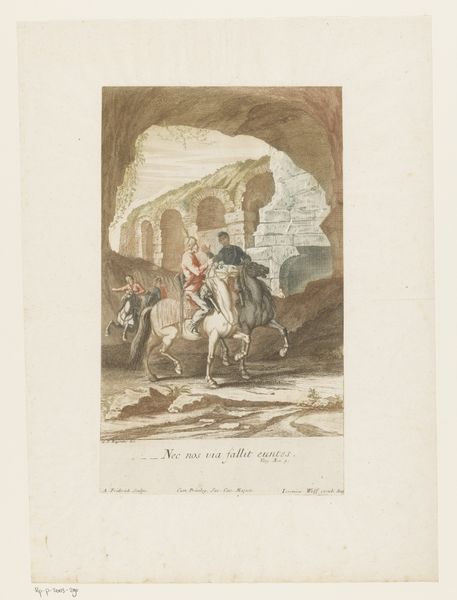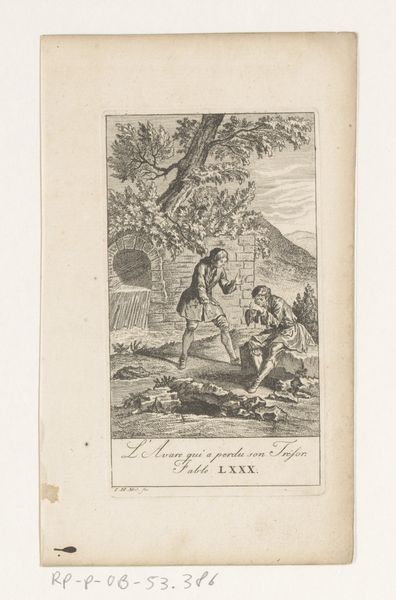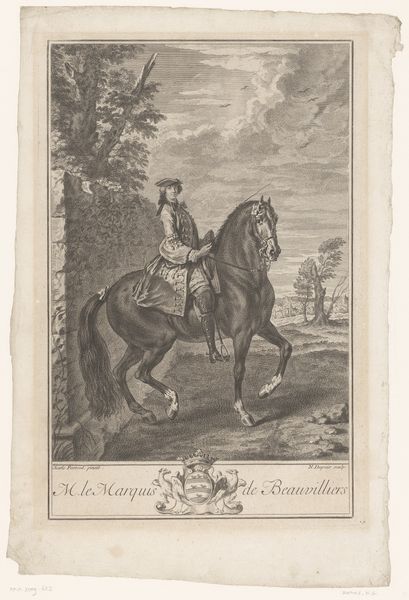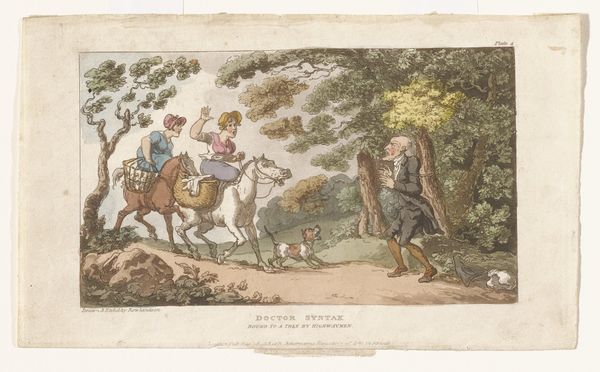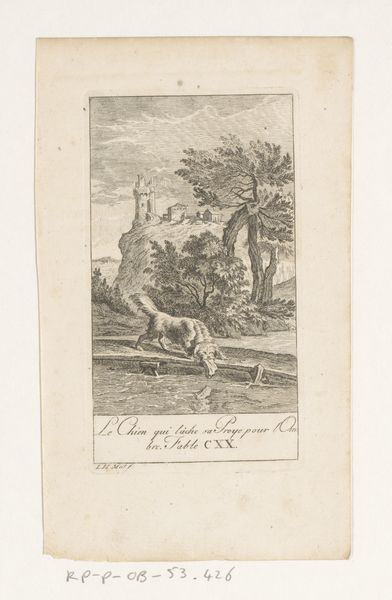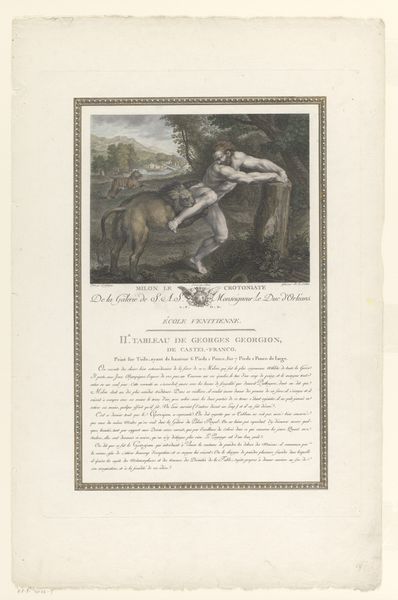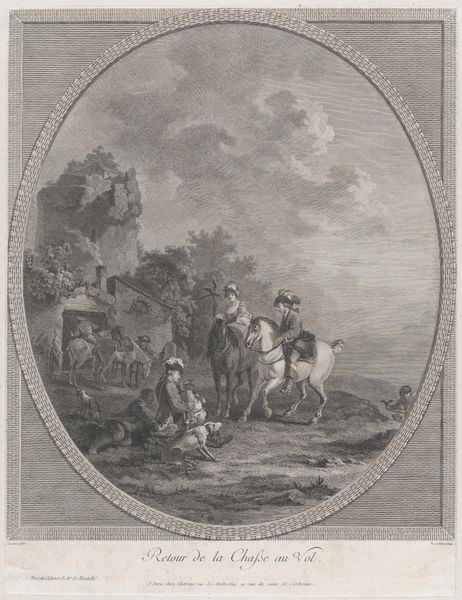
print, etching, ink, engraving
#
narrative-art
#
baroque
# print
#
etching
#
landscape
#
figuration
#
ink
#
line
#
genre-painting
#
engraving
#
watercolor
Dimensions: height 286 mm, width 171 mm
Copyright: Rijks Museum: Open Domain
Curator: It strikes me immediately as a tableau staged more for aesthetic effect than narrative urgency; the figures and horses almost posing as they traverse the valley. Editor: Indeed. Let’s contextualize the artwork a little. What we are seeing here is an etching and engraving with watercolor, created between 1694 and 1724 by Jacob Andreas (I) Fridrich. It is titled "Ruiters trekken door de vallei" - "Riders Crossing the Valley." It resides here at the Rijksmuseum. Curator: Etching, engraving and watercolor… Quite a demanding multi-step production for rendering this kind of dreamlike setting. I’m curious about the specific paper used—its absorbency likely played a role in how Fridrich's washes behave. Editor: It definitely elevates the scene. It calls to mind debates around courtly masculinity of the era. Note how the riders are adorned. What purpose does such sartorial display serve? We see, in effect, a performative aspect to rulership and dominance over nature in that calculated presentation of finery and dress amidst this terrain. Curator: Agreed. There’s definitely a constructed identity being presented here—one linked to privilege and control, as opposed to rugged capability, although their journey implies the later. That dichotomy is revealing. Editor: From a material perspective, the blending of etching and engraving reveals distinct stages in the image's development. The precise lines suggest meticulous planning, contrasting with the fluid, atmospheric effects of the watercolor washes. One wonders how workshops structured this labor... Curator: Excellent point. Were various skilled craftsmen involved? Perhaps they worked collaboratively. The very creation process, therefore, can illuminate potential power dynamics inherent in its construction. Editor: The choice to represent riders framed by elements of a Baroque landscape invites analysis from an intersectional viewpoint. Gender, race, and class all played significant roles in how such representations circulated and influenced societal perceptions. Curator: And ultimately the meaning is negotiated at the nexus of medium, class, gender… The print as an object possesses power to influence how values around heroism or leadership take form. Editor: Precisely. I wonder if the choice to include this landscape in printmaking speaks to a consumerist trend; making idealized landscapes more readily available and circulating particular ideas linked to place and identity to a broader public. Curator: A lot to digest then! But considering the print from production, content and reception encourages nuanced interpretations that disrupt art historical convention. Editor: Indeed. A work to return to with fresh insights each time.
Comments
No comments
Be the first to comment and join the conversation on the ultimate creative platform.

